Post-Cinema After Extinction
 Monday, June 4, 2018 at 9:13PM
Monday, June 4, 2018 at 9:13PM Shane Denson
[ PDF Version ]
In this essay, I argue that contemporary digital moving-image media—what some critics have come to see as “postcinematic” media—are related materially, culturally, and conceptually to extinction as their experiential horizon.[1]
Materially and technologically, on the one hand, post-cinema emerges as a set of aesthetic responses to the real or imagined extinction of film (qua celluloid) or to the death of cinema (as an institution of shared reception). Significantly, on the other hand, such animating visions of technocultural transformation in the wake of a formerly dominant media regime’s demise are linked in complex ways to another experience of extinction: that of the human. That is, post-cinema is involved centrally in the mediation (or premediation) [2] of an experience of “the world without us.”[3] And this is the case both thematically, as in films about impending or actual extinction events, and formally, in terms of what I call a general discorrelation of moving images from the norms of human perception and embodiment that governed classical cinema.[4] Such discorrelation is perhaps most noticeably evidenced in violations of classical continuity principles (for example, in the chaos cinema of contemporary action cinema), but it is anchored more fundamentally in a disruption of the phenomenological relations mediated by the dispositif of spectator, screen, projector, and analog camera.[5] Digital cameras and algorithmic image-processing technologies confront us with images that are no longer calibrated to our embodied senses, and that therefore must partially elude or remain invisible to the human. Anticipating and intimating the eradication of human perception, post-cinema is therefore “after extinction” even before extinction takes place: it envisions and transmits affective clues about a world without us, a world beyond so-called “correlationism,” a world that arises at the other end of the Anthropocene—and perhaps a world that we inhabit already.[6]Let me start with a set of claims that is almost certainly too large and sweeping to be accepted without qualification but whose general trajectory I believe is correct. Photography, to begin with, commemorated/anticipated/mediated personal and/or individual deaths. Next, cinema imagined/imaged a form of reanimation from photography’s death-borne traces and opened its scope to include collectives, masses, societies. Post-cinema, finally, discorrelates the hyper-animated image from human perception and in this way anticipates/premediates/commemorates mass extinctions.[7]
In effect, two trajectories—one temporal and one quasi-spatial—coincide in this movement from the photographic to the cinematic to the postcinematic. Temporally, there is a reduction of the technical time-scale, from the long exposure of the daguerreotype to the snapshot that enabled cinematic recording, which at some point required standardization (notably, the 24fps standard agreed upon for the purposes of image/sound synchronization) but eventually gave way to the microtemporal duration and future-orientation of high-speed data and algorithmic processing (which bears most directly upon moving images in the realm of compression protocols). Spatially, there is an increase in the scope or focal expanse of mediation, from the individual to the group to the species to the planet as a whole. The task that I am undertaking in this essay—or better, the line of thinking that I would like to propose to the reader—is one that correlates these two trajectories in order to understand why post-cinema, with its microtechnical and micro- or sub-perceptual bases, tends to take a macrolevel interest in issues of a planetary scale (in particular, global ecological disaster and extinction). At stake, then, is a correlation of material and thematic aspects of post-cinema’s anticipation, premediation, or commemoration of extinction. And this media-technical and narrative-thematic correlation is paradoxically motivated, as I have suggested, by the discorrelation of postcinematic images from human perception.
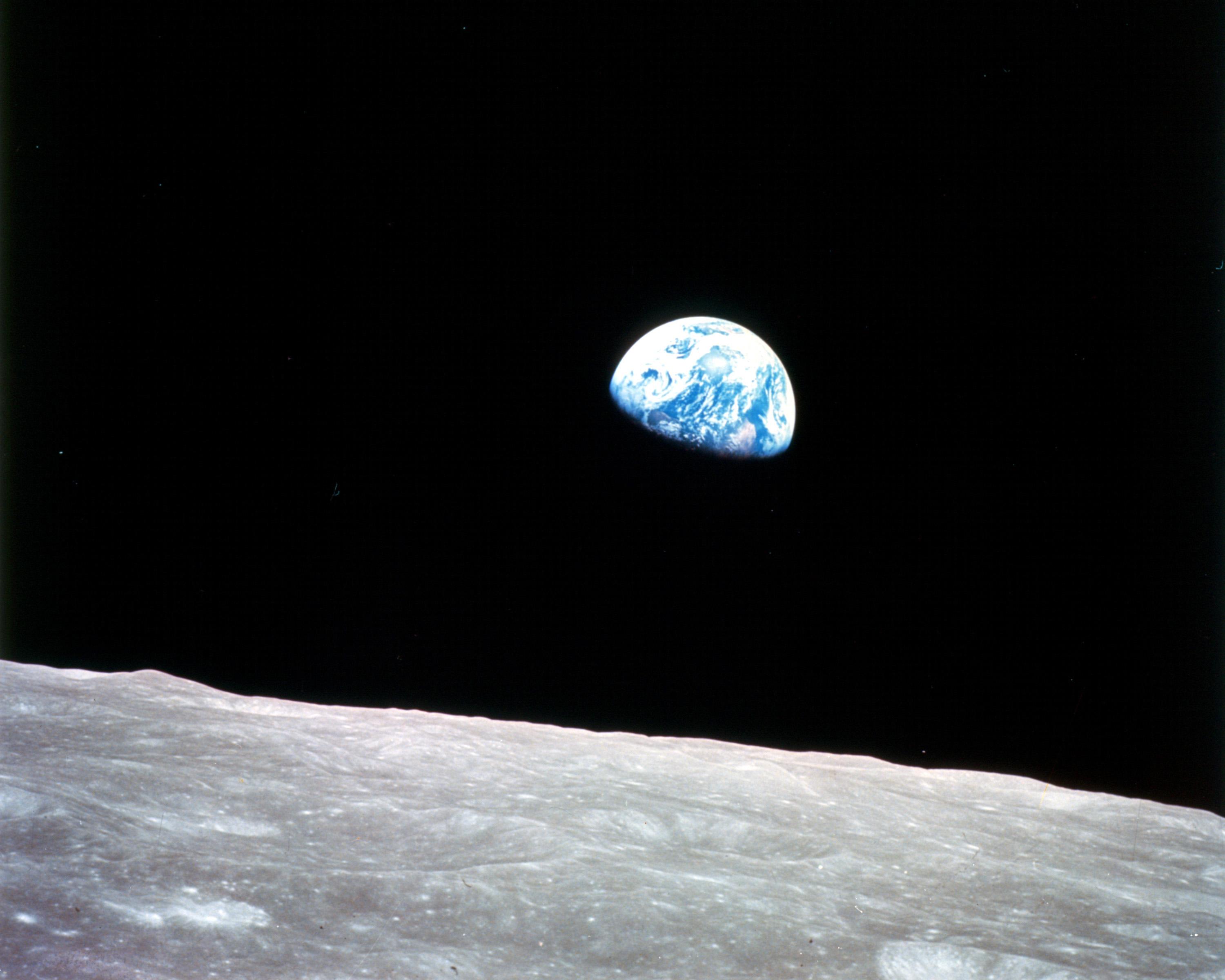
Fig. 1: “Earthrise.” (Source: NASA)

Fig. 2: “Blue Marble.” (Source: NASA)
To get a first idea of what it might mean for an image to be discorrelated from humanly embodied perception, consider the famous photographic views of the Earth from space (e.g., NASA’s Earthrise, from 1968, or Blue Marble, from 1972).[8] According to Martin Heidegger, who lived just long enough to see these images realized as ontically concrete objects rather than merely metaphysically implicit possibilities of the “age of the world picture,” [9]such images depict a planet effectively devoid of life—sterile, machinic images of a planet reduced to a merely present-at-hand thing, or the stuff of an abstract Nature.[10] And while this observation may not be fully satisfactory, perhaps it can help us to understand the way that post-cinema disrupts the human or humanistic focus of classical cinema.[11]
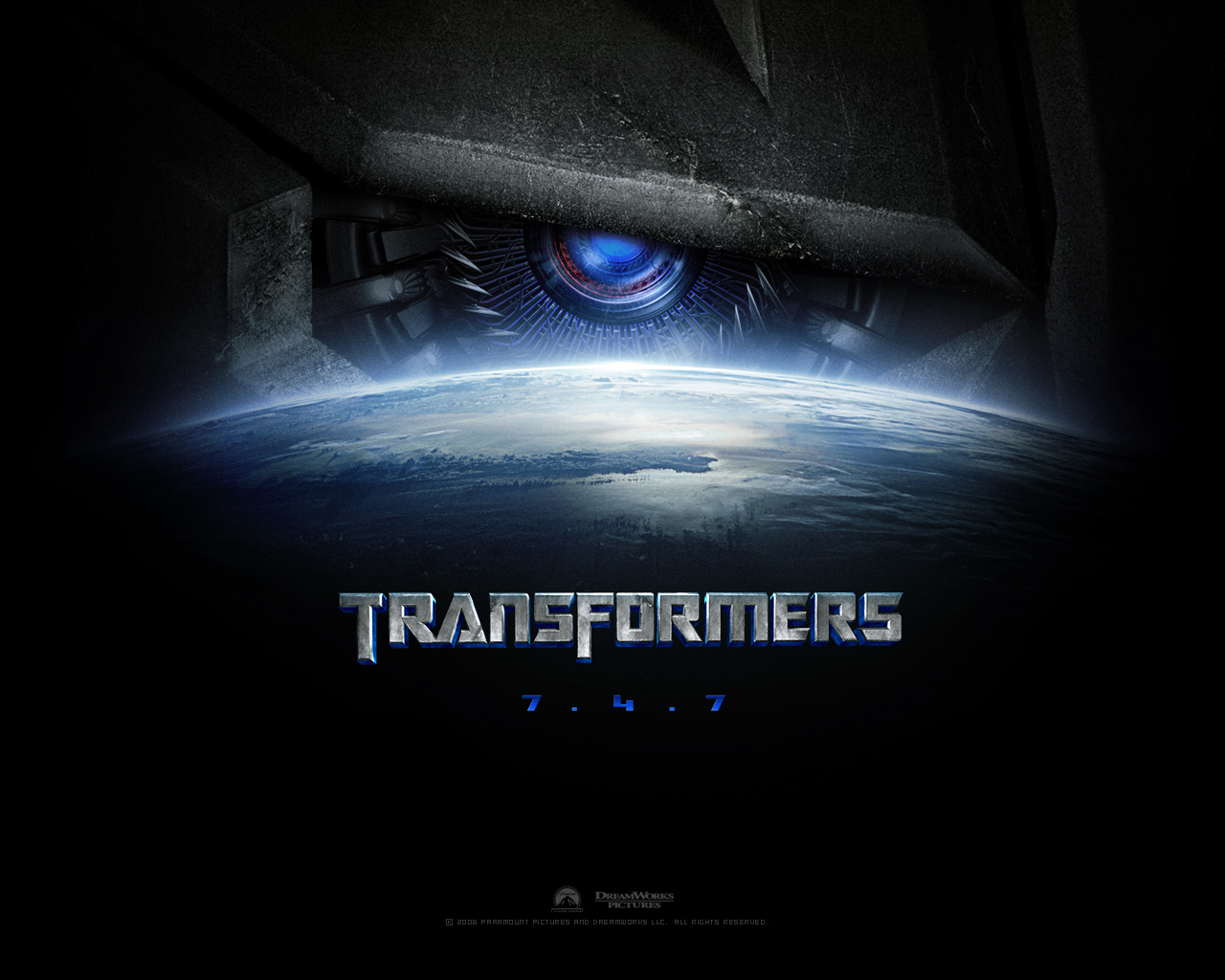
Fig. 3: Transformers (dir. Michael Bay, 2007)
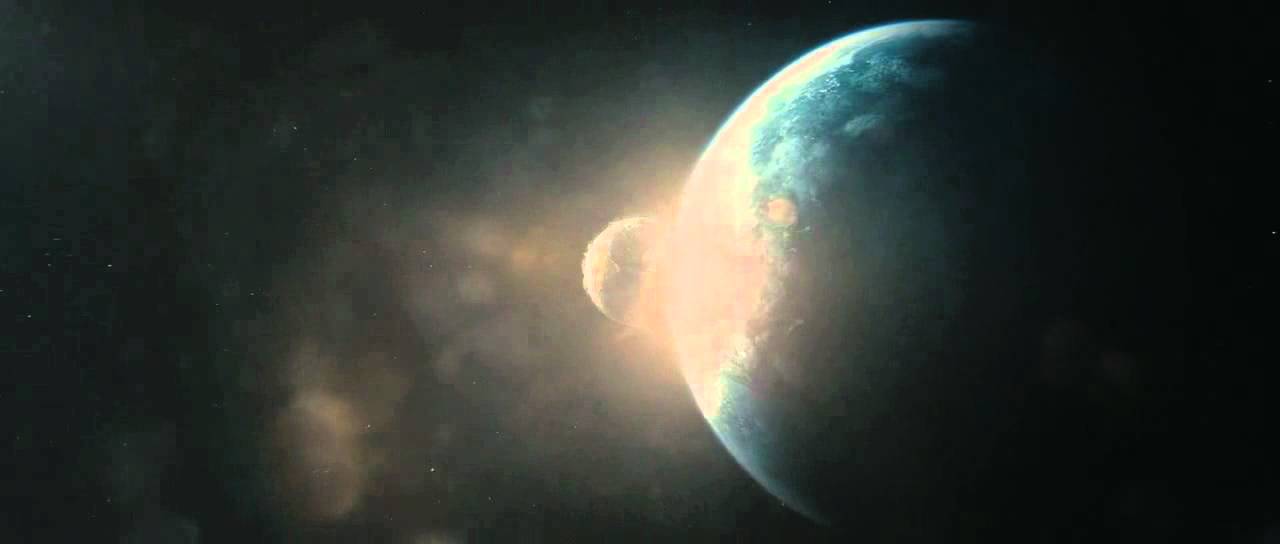
Fig. 4: Melancholia (dir. Lars von Trier, 2011)
Planetary images feature prominently in a host of properly post-cinematic productions—from Michael Bay’s Transformers franchise (US/China/Canada, 2007–2017) to Lars von Trier’s Melancholia (Denmark/Sweden/France/Germany, 2011). In both of these examples, which are wildly different from one another in terms of pacing and affective tone, human or planetary extinction is centrally at stake, and the view of the earth from without serves to emphasize these stakes. But the crucial operation that marks the shift to a postcinematic regime happens at a much more basic level of visual mediation; that is, the planetary images may gesture allegorically towards a dehumanization of vision, a displacement of embodied perception by means of a macro-scale perspective, but the real shift away from the ready-to-hand-ness of worldly involvement that Heidegger worried about is consummated at a much smaller scale, by means of images that fail to direct our perspective in the way that cinema classically did.
One way of thinking about the de-linking of the camera from the focused view of the human is by way of a shift from suture to scan: classical cinematography and editing techniques directed our attention, literally showed us where to look, but postcinematic images often require us to view them differently, to attend to the full frame and all of the elements it contains as potentially equal in significance (or insignificance). Such images elicit not so much the investment of a gaze but a more fleeting, dispersed, and scanning form of regard. Vivian Sobchack’s classic work on the phenomenology of film experience revealed a strong, material-semiotic correlation between cinematic techniques for framing time, space, and action in narrative settings and human faculties of perception and locomotion. Of course, these correlative bonds were challenged by avant-garde and other filmic practices, hence revealing the bodily and perceptual norms at the heart of classical cinema to be contingent and constructed rather than natural. But today the correlation is subject to a more fundamental sort of challenge, as theorists of the postcinematic have argued (and as Sobchack herself anticipated in her distrust of electronic mediation).[12] Steven Shaviro’s description of a move from continuity principles to an essentially post-continuity regime helps us to understand this transformation.[13]
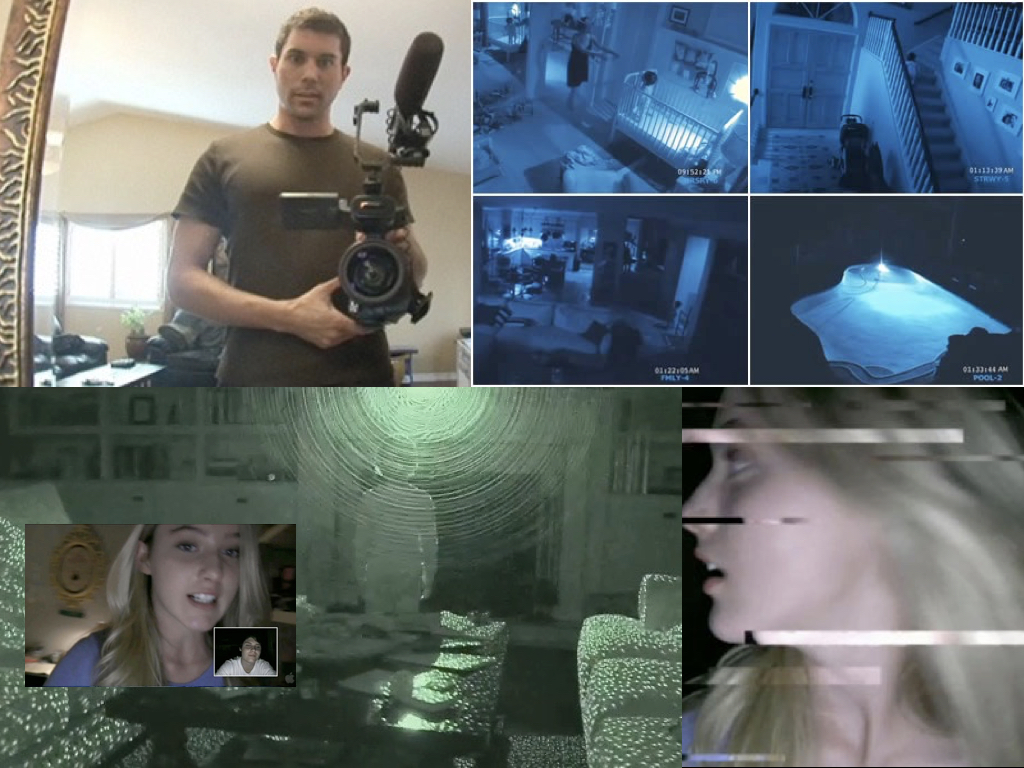
Fig. 5: Discorrelated images in the Paranormal Activity franchise
Again, one place we witness the challenge to continuity, and hence the de-emphasis of bodily location and locomotion as central vectors for orienting the spectator’s intentional relations to postcinematic images, is in the camera’s framing of scattered, unfocused, and merely scannable images. For example, the Paranormal Activity franchise (US, 2007–2015) utilizes a variety of cameras severed from human vision or interest, including the nonhuman vision of surveillance cameras that reflect the general dispersal and diffusion of the visual in the so-called control society.[14] These images intimate to us the way that ubiquitous computing and the complete biopolitical modulation of life and labor might be prepared by way of the ubiquitous vision of drones, smartphones, satellites, and stoplight cameras. And this environmental sort of vision displaces the centered vision of the human subject, which is now expected to see in the manner of such machines. We regard post-cinema’s images much like we regard images of the planet—not as something that frames an actionable scenario but as a present-at-hand image-object that can be scanned for information—which might or might not present itself to us.
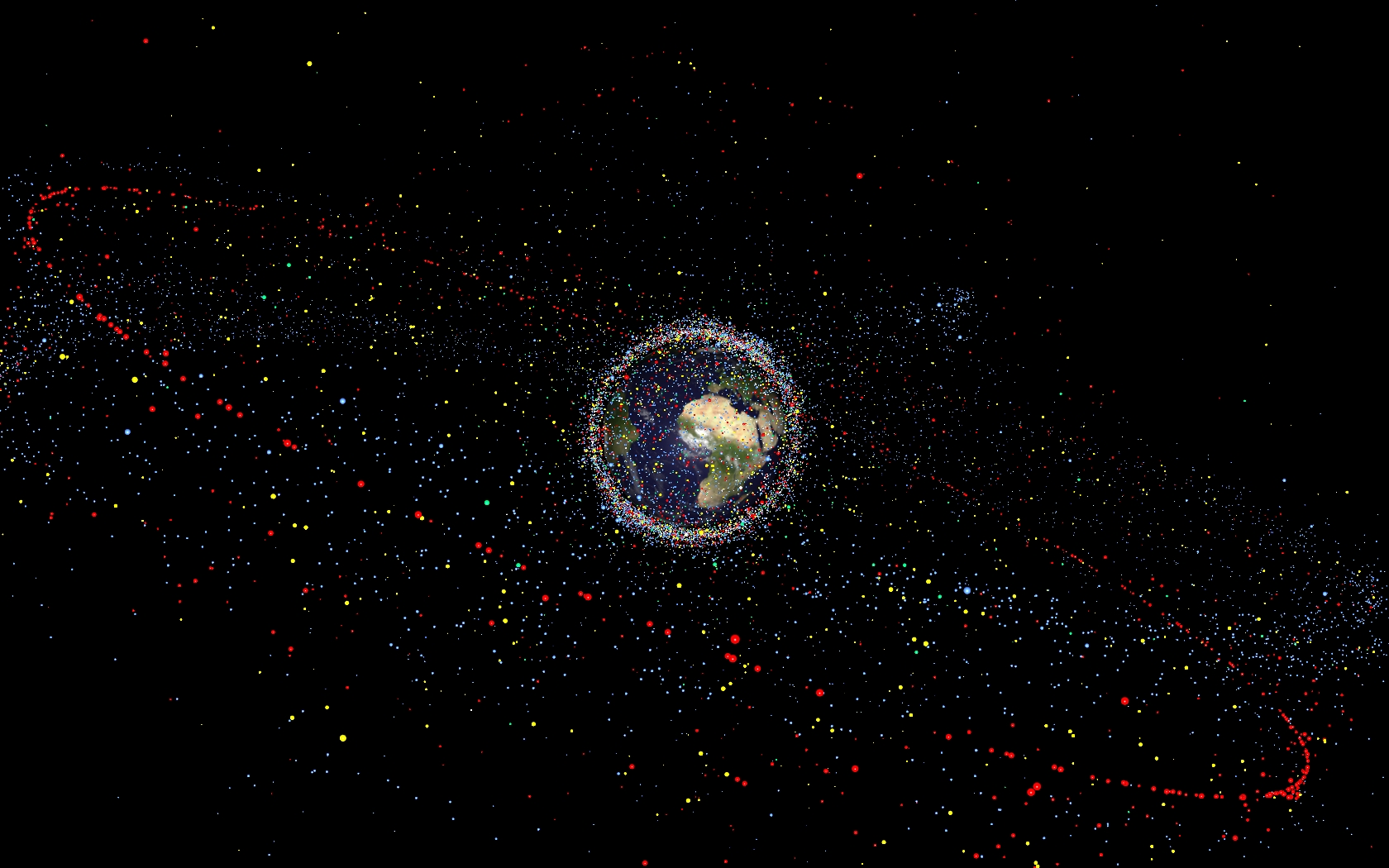
Fig. 6: ESA space junk visualization (Source: European Space Association)
In the meantime, of course, images of Earth have themselves shifted from photographic to digital imagery and data-driven animations. Thus, scientific and entertainment-oriented images of the planet, both of which rely on the same frameworks and infrastructures for their computer-generated imagery, are today tightly imbricated in a postcinematic media regime. Max Symuleski has considered the ways that images such as the ESA’s rendering of the great mass of space junk orbiting the planet challenge cognitivist and anthropocentric perspectives by indicating a nonhuman form of movement, paradoxically restoring the human artifactuality that Heidegger noted was missing in earlier pictures of the Earth and linking non-anthropocentric movement with our own activity by way of smartphones, GPS, etc.—devices that are in contact with this orbiting mess in ways that bypass our cognitive grasp on the world.[15] This radically environmental perspective has been articulated recently in Mark Hansen’s perspective on the feed-forward operation of twenty-first-century media and the essentially non-psychic experiences that we have with and through our devices’ sensors.[16] According to Hansen, these sensors register data about the world at a microtemporal scale that is categorically beyond the pale of human perception, but they can feed this data forward to us, thus putting us in touch with aspects of the world without us—offering us an experience of events that are effectively discorrelated from human cognition. And it is precisely this sort of experience, I suggest, that links contemporary planetary imagery—and particularly post-cinema’s preoccupation with global-scale events such as extinction—with micro-scale transformations in the relation between image and perceiver.
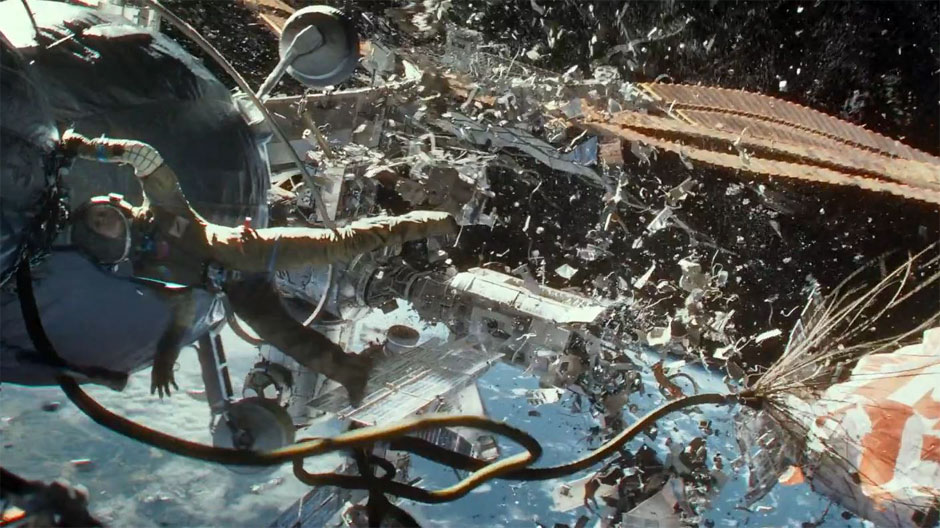
Fig. 7: Space debris in Gravity (dir. Alfonso Cuarón, 2013) )
In her engagement with the environmental focus of post-cinema, Selmin Kara opens up a space for thinking about these relations.[17] According to Kara, Alfonso Cuarón’s 2013 Gravity (US/UK) positions space-debris as a new sort of villain for the twenty-first century; significantly, Kara relates this, along with images and figurations of global catastrophe in films such as Snowpiercer (dir. Bong Joon-ho, South Korea/Czech Republic, 2014), to what she calls “waste fantasies.” Waste, according to Kara, is imaged as an event, one that articulates new forms of time and space in accordance with the conditions and the geological scale of the Anthropocene. Accordingly, she sees a range of postcinematic films, including the apocalyptic or cosmic scenarios of Melancholia, Tree of Life (dir. Terrence Malick, US, 2011), or Beasts of the Southern Wild (dir. Benh Zeitlin, US, 2012), as “pointing . . . to an Anthropocene imaginary.” Building upon this perspective on what Kara calls anthropocenema, I am trying to specify the relation that obtains here between the imaginary and the real—i.e., between thematic-representational figurations and the material-medial realities of post-cinema (and the larger environment in which it participates). Ultimately, I am trying to link postcinematic productions generally, including those that lack an explicitly global-ecological or anthropocenematic focus, with a sensibility (if not an imaginary) that is attuned to the possibility (or reality) of extinction.
Fig. 8: Extinction in Birdman (dir. Alejandro G. Iñárritu, 2014)
Again, the crux upon which my argument hinges is the link between macro-scale perspectives and a micro-scale transformation in the relation between image and perceiver. I have pointed to Paranormal Activity’s scannable surveillance images, where nothing apparently happens for long stretches, as one site where a discorrelation from classical cinema’s human-centered “action images” (in Deleuze’s term) takes place; so-called slow cinema takes this anti-action tendency a step further. Another such site is in the hyperinformatic images of recent action cinema, which so often disregards the rules of continuity editing (such as the 180-degree rule) in its staging of frenetic action scenes and high-speed chases. Michael Bay’s Transformers films—the fourth of which is fittingly subtitled The Age of Extinction (US/China, 2014)—are again instructive: they are full of such violations of continuity, but even more significant, I would argue, are the microperceptual affronts to subjective focus or molar perception exhibited in the films’ central visual spectacles: the CGI-heavy images of the Transformers transforming embody a certain outstripping of human perceptual faculties, discorrelations that are staged in continuous takes, without the need for explicit violations of continuity. The images are hyperinformatic in the sense that they overload our capacities, giving us too much visual information, presented too fast for us to take in and process cognitively—information that is itself generated and embodied in informatic technologies operating at speeds well beyond our subjective grasp. In an important sense, then, these images embody an ostentatious display of the inhuman speed of post-cinema’s technical infrastructure, hence producing images that are indifferent to us, that do not depend upon our investment of perceptual attention, that positively resist perceptual capture. (Less ostentatiously, Birdman’s (dir. Alejandro G. Iñárritu, US, 2014) digitally based, fake continuous take plays at concealing the divergence between human vision and the humanly impossible embodiment of digitally composited space upon which it depends so crucially.) These are both glimpses, in other words, of a world without us—concise, nonrepresentational images of the worldly discorrelation upon which post-cinema generally is founded and upon which it articulates its representations of global scale disaster and extinction in particular.
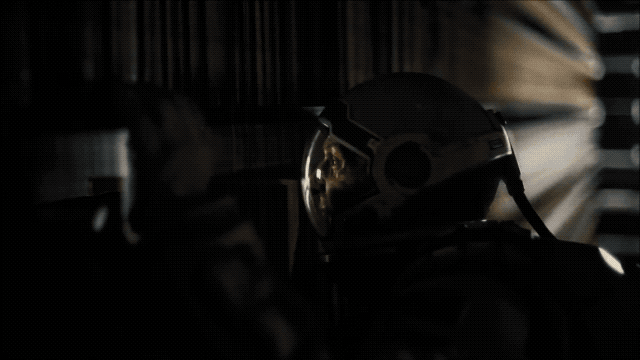
Fig. 9: Tesseract in Interstellar (dir. Christopher Nolan, 2014))
Thus, post-cinema’s post-extinction ecologies and planetary images dispose us to think about the world without us, or, in cases like Interstellar (dir. Christopher Nolan, US/UK, 2014), they shift the focus and imagine the converse scenario of us without the world. But these scenarios also do something more. Interstellar ostensibly follows a long tradition of space odyssey sci-fi movies, but the film’s central visual attraction—the wormhole tesseract at the end of the universe that links spatiotemporally distant times and spaces—actually focuses more specifically on digital techniques of visualization that bypass the cinematic techniques and forms of vision that the film’s forebears utilized. It attempts, in this way, to recode spectatorial engagement as diffuse or prismatic, rather than centrally focused, punctual, or perspectival relation. Staged in accordance with the material parameters of the hyperinformatic medium in which it is realized, Interstellar’s tesseract might be seen as an emblem for post-cinema’s manner of linking micro- with macro-cosmic dimensions—i.e., the sub- with the supra-perceptual, or the micromateriality of the medium with the environmental materiality of a planet seemingly doomed to becoming incapable of sustaining life.
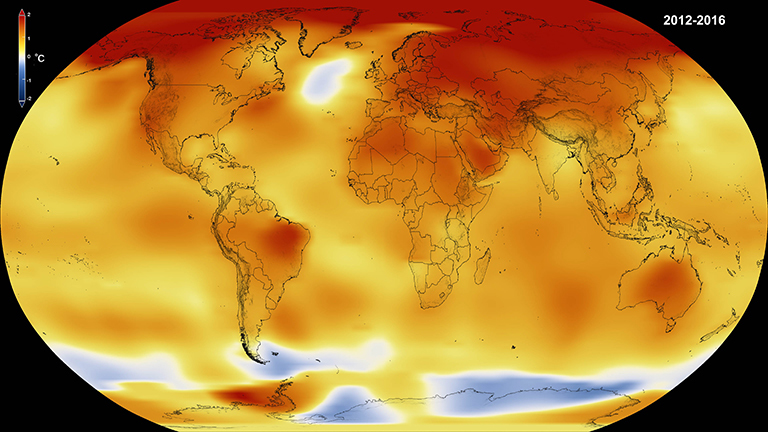
Fig. 10: “NASA, NOAA data show 2016 warmest year on record globally”(Source:NASA)
Finally, then, post-cinema is (quite naturally, one might say) “after extinction” because it emerges along with and as a part of the massively environmental agencies of twenty-first-century media, with their real-time accumulation, microtemporal processing, and feed-forward operationalization of data. Post-cinema emerges in the light of knowledge of—and more importantly, in the light of detailed algorithmic models of—impending planetary demise, and these models are the product of precisely those data-intensive operational characteristics of twenty-first-century media from which post-cinema is inseparable. Climate change is linked not only thematically to post-cinema, in examples ranging from Snowpiercer to Sharknado (dir. Anthony C. Ferrante, US, 2013), but materially informs it through the shared medial basis upon which each of them is mediated to our experience—and, indeed, through the shared medial basis by which direct sensory experience is not and cannot be made available to consciousness. The eclipse of conscious agency not only puts us in a mood to contemplate extinction; in a very real sense, our inchoate grasp of this eclipse is an affective grasp or inkling of the techno-environmental agencies that have produced an awareness of extinction as a very literal potential (hence an inkling of the operation of media-technical agencies that continue, at present, to expedite the eventual occurrence of this potential future). Moreover, the discorrelation of postcinematic images marks a dramatic shift in the operation of media, an eclipse of the pragmatic condition I have posited for thinking about them; for if previous visual media could be treated in terms of the potentials they open to us for interfacing with the world, today’s computer-generated Earth imagery points to the continued operation of a data-driven planet without us—a world with which we categorically cannot interface and in which we cannot live. Post-cinema thus encompasses moving-image and other media generated in and through a media environment that situates itself after the urgency of the extinction that we now anticipate. Being after what lies ahead, post-cinema embodies the temporal logic of the feed-forward, a temporality of pre-post-presence or a present past that is also past the future.
Notes
[1] Central discussions of post-cinema include Steven Shaviro’s Post-Cinematic Affect (Winchester, UK: Zero Books, 2009) and the many contributions to Shane Denson and Julia Leyda, eds., Post-Cinema: Theorizing 21st-Century Film (Falmer, UK: REFRAME Books, 2016), reframe.sussex.ac.uk/post-cinema/contents/.
[2] See Richard Grusin, Premediation: Affect and Mediality After 9/11 (London: Palgrave Macmillan, 2010).
[3] The World Without Us is the title of a bestselling work of speculative nonfiction by journalist Alan Weisman. The book considers what would happen to the planet’s human-made and naturally occurring environments if humans were suddenly to disappear. See Weisman, The World Without Us (New York: Picador, 2007). Several adaptations of this scenario have appeared in moving-image media as well, for example the History Channel’s series Life After People, which aired from 2008 to 2010. As will become clear, however, I am interested not only in these types of speculative futures, but also in the ways that post-cinematic media engage in a more philosophical form of speculation—one that engages a non-anthropomorphic world that already exists, even before an extinction event: what Eugene Thacker calls “the world-without-us.” See Thacker’s In the Dust of This Planet, vol. 1 of Horror of Philosophy (Winchester, UK: Zero Books, 2011).
[4] For a more detailed account of discorrelation in the context of post-cinema, see my “Crazy Cameras, Discorrelated Images, and the Post-Perceptual Mediation of Post-Cinematic Affect,” in Denson and Leyda, Post-Cinema.
[5] On the notion of chaos cinema, see Matthias Stork’s video essay “Chaos Cinema: The Decline and Fall of Action Filmmaking,” Press Play, 22 August 2011, www.indiewire.com/2011/08/video-essay-chaos-cinema-the-decline-and-fall-of-action-filmmaking-132832/. For a somewhat different take on the transformation of contemporary editing practices, including but not restricted to the action genre, see also Steven Shaviro’s “Post-Continuity: An Introduction,” in Denson and Leyda, Post-Cinema.
[6] The notion of correlationism derives from Quentin Meillassoux, who writes: “The central notion of modern philosophy since Kant seems to be that of correlation. By ‘correlation’ we mean the idea according to which we only ever have access to the correlation between thinking and being, and never to either term considered apart from the other. We will henceforth call correlationism any current of thought which maintains the unsurpassable character of the correlation so defined.” See Meillassoux, After Finitude: An Essay on the Necessity of Contingency (London: Continuum, 2008), 5. It should be noted that my concept of discorrelation, as a media-theoretical term, is not predicated upon this strong philosophical thesis but rather aims to describe the way that the yoking of subjective perception in moving-image media has been weakened or become optional, as I argue below. As such, there is only a weak, heuristic, but nevertheless non-imaginary correspondence between the post-cinematic media theory explored here and the broad philosophical tendency of speculative realism.
[7] Media-theoretical bases for these claims can be found in: Roland Barthes’s Camera Lucida, wherein he explores the relation of photography to death; Vivian Sobchack’s The Address of the Eye and, even more forcefully, “The Scene of the Screen,” in which she sees a correspondence between an objectified past in photography, an animated present in film, and a disembodied temporality in electronic media; and in Lev Manovich’s “What Is Digital Cinema?,” in which he sees a return in digital moving images to the animation that preoccupied the early cinematic “trick film” and related forms. See Roland Barthes, Camera Lucida: Reflections on Photography, trans. Richard Howard (New York: Hill and Wang, 1981); Vivian Sobchack, The Address of the Eye: A Phenomenology of Film Experience (Princeton, NJ: Princeton University Press, 1992); Lev Manovich, “What Is Digital Cinema?,” in Denson and Leyda, Post-Cinema.
[8] My thinking about these images is indebted to Max Symuleski’s “Earth, World, and Globe: Phenomenological Considerations of the Contemporary Planetary Landscape,” Widok: Teorie i praktyki kultury wizualnej 8 (2014): pismowidok.org/index.php/one/article/view/222/458.
[9] The reference is to Heidegger’s “The Age of the World Picture,” published in the 1952 Holzwege under the title “Die Zeit des Weltbildes,” and based on a lecture originally delivered in 1938—many years before a literal picture of the planet would appear
[10] Heidegger commented (in passing) on images of the Earth from space in his infamous interview with the German magazine Der Spiegel, “Nur noch ein Gott kann uns retten,” translated in English as “Only a God Can Save Us.” In a far-ranging discussion of technicity and the supposed “uprooting” of humans, among many other topics, Heidegger says: “I don’t know if you were shocked, but [certainly] I was shocked when a short time ago I saw the pictures of the earth taken from the moon. We do not need atomic bombs at all [to uproot us]—the uprooting of man is already here. All our relationships have become merely technical ones. It is no longer upon an earth that man lives today.” See Heidegger, “‘Only a God Can Save Us: The Speigel Interview (1966),” trans. William J. Richardson, in Heidegger: The Man and the Thinker, ed. Thomas Sheehan (Chicago: Precedent Press, 1981), 56.
[11] Attentive readers may question the focus on classical cinema as the designated “other” of post-cinema. It may seem that I am merely setting up, in this way, a necessary foil for post-cinema, a straw man which might otherwise be called post-classical, or even more simply, contemporary cinema. But in addition to articulating a hegemonic stylistic form, my claim is that classical cinema instantiates a generically dominant model of phenomenological engagement with moving images throughout much of the twentieth century. Focusing on the classical/post-classical distinction tends to put too much weight on matters of style while ignoring questions of phenomenology and ontology. My approach to the cinema/post-cinema divide is more closely aligned with (while hardly identical with) Sobchack’s arguments about the differences between cinematic and electronic media; as is evident in “The Scene of the Screen” and The Address of the Eye, Sobchack also takes classical cinema as the paradigm for the phenomenology of cinema generally. In any case, the decisive test of this choice will be whether the cinema/post-cinema difference is borne out as a real and sufficiently fundamental departure from the formerly dominant model on an ontological and phenomenological, rather than merely formal/stylistic, level. See Sobchack, “The Scene of the Screen: Envisioning Photographic, Cinematic, and Electronic Presence,” in Carnal Thoughts: Embodiment and Moving Image Culture (Berkeley: University of California Press, 2004), 135–62; reprinted in Denson and Leyda, Post-Cinema.
[12] Indeed, Sobchack herself refers to electronic media as postcinematic media in the concluding pages of her 1992 book, The Address of the Eye. She writes: “Postcinematic, incorporating cinema into its own techno-logic, our electronic culture has disenfranchised the human body and constructed a new sense of existential ‘presence.’ Television, video tape recorders/players, videogames, and personal computers all form an encompassing electronic system whose various forms ‘interface’ to constitute an alternative and virtual world that uniquely incorporates the spectator/user in a spatially decentered, weakly temporalized, and quasi-disembodied state.” Sobchack, The Address of the Eye, 300.
[13] See Shaviro’s “Post-Continuity: An Introduction” and, more generally, his Post-Cinematic Affect (Winchester, UK: Zero Books, 2009).
[14] More detailed engagements with Paranormal Activity can be found in Julia Leyda, “Demon Debt: Paranormal Activity as Recessional Post-Cinematic Allegory,” in Denson and Leyda, Post-Cinema; and Therese Grisham, Julia Leyda, Nicholas Rombes, and Steven Shaviro, “The Post-Cinematic in Paranormal Activity and Paranormal Activity 2,” in Denson and Leyda, Post-Cinema. Leyda writes that “the camera fixed to its tripod in Paranormal Activity and the static security cameras in Paranormal Activity 2 force the spectator to scan the frame continuously, because the fixed camera cannot highlight action or details using close-ups or editing, as in classical cinema.”
[15] Symuleski, “Earth, World, and Globe.”
[16] See Hansen’s Feed-Forward: On the Future of Twenty-First-Century Media (Chicago: University of Chicago Press, 2015).
[17] See, in particular, Kara’s “Anthropocenema: Cinema in the Age of Mass Extinctions,” in Denson and Leyda, Post-Cinema.
Shane Denson is Assistant Professor of Film & Media Studies in the Department of Art & Art History at Stanford University. His research and teaching interests span a variety of media and historical periods, including phenomenological and media-philosophical approaches to film, digital media, comics, games, videographic criticism, and serialized popular forms. He is the author of Postnaturalism: Frankenstein, Film, and the Anthropotechnical Interface (Transcript-Verlag/Columbia University Press, 2014) and co-editor of several collections: Transnational Perspectives on Graphic Narratives (Bloomsbury, 2013), Digital Seriality (special issue of Eludamos: Journal for Computer Game Culture, 2014), and the open-access book Post-Cinema: Theorizing 21st-Century Film (REFRAME Books, 2016. See also shanedenson.com for more information.
Reader Comments